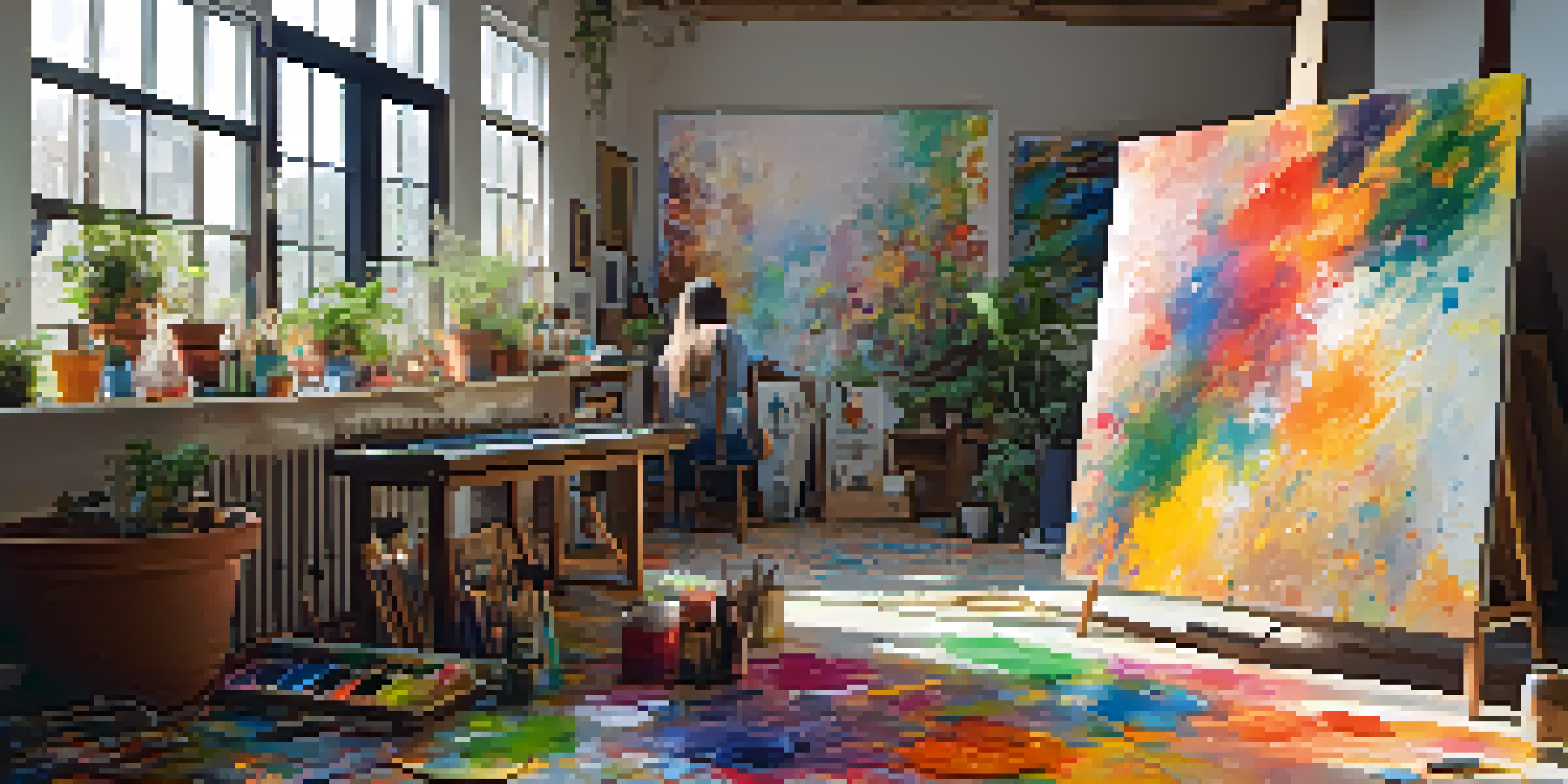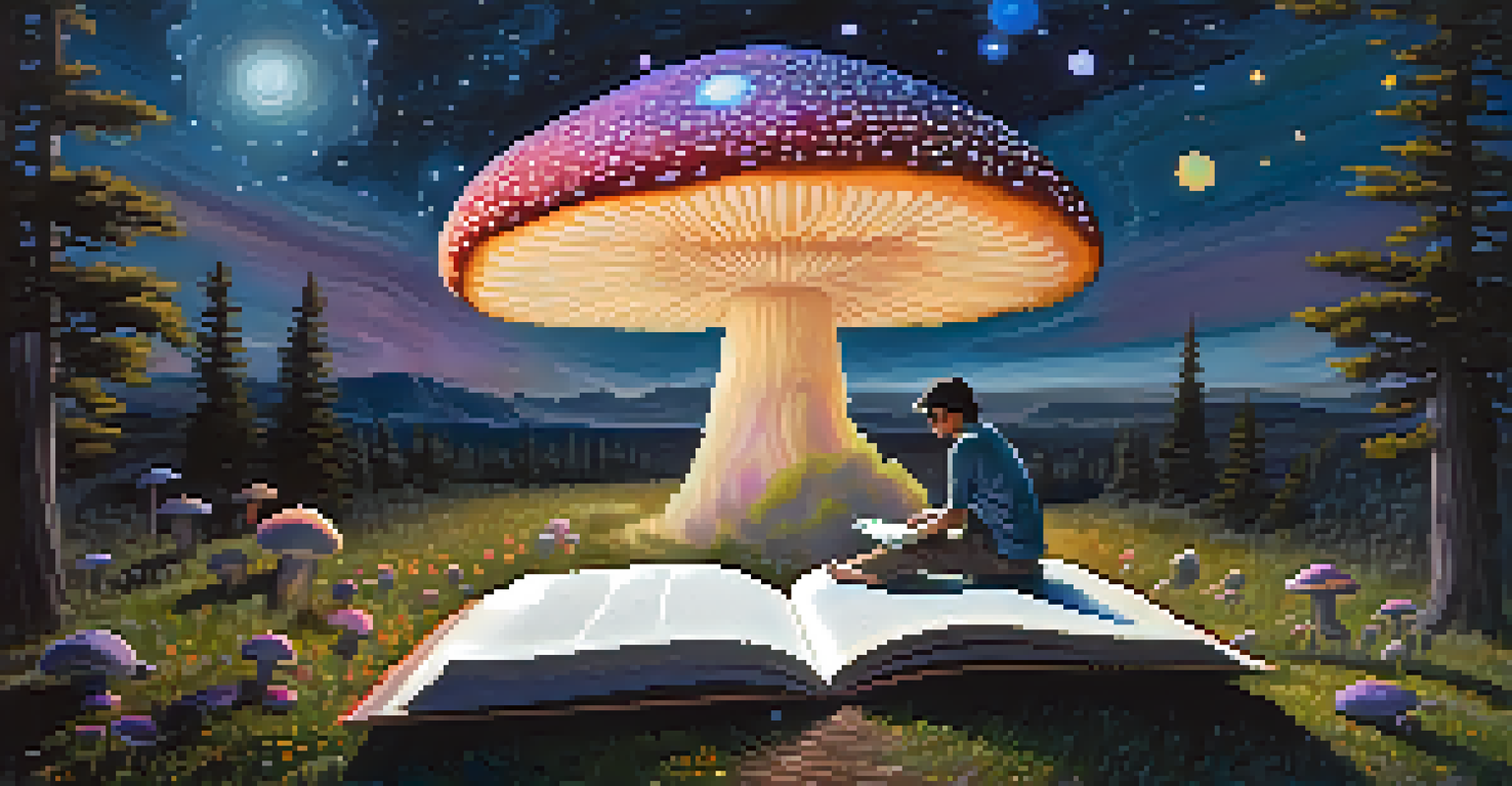Artists and Entheogens: A Journey into Creative Expression

Understanding Entheogens: A Gateway to Creativity
Entheogens, often referred to as psychedelics, are substances that can alter perception and consciousness. Artists have long been drawn to these compounds in search of deeper insights and creative inspiration. The term 'entheogen' itself means 'generating the divine within,' highlighting their potential to unlock new realms of thought.
Psychedelics show us that the universe is made of stories, not atoms.
When consumed, entheogens can create experiences that feel transcendent or spiritually enlightening. This can lead to a heightened sense of connection with one's art, allowing for a flow of ideas that may not emerge during sober moments. For many artists, this journey is less about escape and more about exploration and expression.
Related Resource
The interplay between entheogens and creativity is not universally accepted, but numerous artists attribute their masterpieces to these experiences. From visual artists to musicians, the stories of inspiration often intertwine with the use of these substances, making it a fascinating topic for exploration.
Historical Perspectives: Artists and Psychedelic Use
Throughout history, many cultures have utilized entheogens in their artistic practices. For example, the ancient Greeks incorporated substances like kykeon into their rituals to expand consciousness and enhance creativity. These traditions reveal a longstanding relationship between art and altered states of mind.

In the 20th century, the rise of psychedelia brought a renaissance of artistic expression influenced by entheogens. Iconic musicians like The Beatles and artists like Salvador Dalí drew on their psychedelic experiences to create works that challenged conventional thinking and aesthetics. This era opened up new avenues for creativity, blending art with spirituality.
Entheogens Enhance Creative Insight
Artists often use entheogens to unlock deeper creative insights and express ideas that may remain hidden in sober states.
These historical examples showcase how artists have sought to expand their creative horizons through entheogens. By examining the past, we can better understand the ongoing dialogue between these substances and artistic expression in contemporary society.
Personal Journeys: Artists Share Their Experiences
Many artists have openly shared their transformative experiences with entheogens, revealing how these substances shaped their creative processes. For instance, some musicians report that psychedelics help them break free from writer's block, allowing melodies and lyrics to flow more freely. This personal testimony adds a relatable layer to the conversation about creativity and altered states.
The artist's job is to be a witness to their time in history.
Visual artists often describe a profound connection to their work when under the influence of entheogens. They may see colors and patterns in ways that evoke deep emotions or insights, which they then translate onto the canvas. This can lead to pieces that resonate on a level that feels almost otherworldly.
Related Resource
These personal journeys not only highlight the individual relationship between artist and substance but also contribute to a broader understanding of how creativity can be nurtured through unconventional means. Each story adds depth to the narrative of art and entheogens.
The Science Behind Entheogens and Creativity
Research into the effects of entheogens on the brain reveals fascinating insights into their potential for fostering creativity. Studies suggest that these substances can enhance neuroplasticity, allowing for new connections and associations to form in the mind. This could explain why artists often report a surge in inspiration during or after their experiences.
Additionally, entheogens are believed to promote divergent thinking, a cognitive process that encourages generating multiple solutions to a problem. This type of thinking is crucial for creative endeavors, as it allows artists to explore various possibilities and push the boundaries of their work. It's like opening a door to a room filled with endless ideas.
Historical Ties Between Art and Psychedelics
Throughout history, various cultures have integrated entheogens into artistic practices, highlighting a long-standing connection between altered states and creative expression.
Understanding the science behind these experiences can demystify the relationship between entheogens and creativity, providing a framework for why they may be effective tools for artistic expression. This knowledge can help artists make informed decisions about their creative practices.
Contemporary Artists Embracing Entheogens
In today's artistic landscape, many contemporary artists are openly embracing entheogens as part of their creative process. From painters to digital artists, these individuals often explore the intersection of art and psychedelia, creating works that reflect their experiences. This movement has sparked renewed interest in the potential of entheogens as tools for creativity.
Some artists host workshops or retreats focused on the integration of entheogens into the creative process. These gatherings provide a safe space for individuals to explore their creativity while sharing insights and experiences with like-minded people. The sense of community that emerges from these events often enhances the artistic journey.
Related Resource
As more artists share their stories and practices, the stigma surrounding entheogen use in art continues to diminish. This openness fosters an environment where creativity can thrive, encouraging experimentation and innovation across various artistic mediums.
Ethical Considerations: Navigating the Use of Entheogens
While the relationship between entheogens and creativity can be inspiring, it also raises important ethical considerations. For example, the potential for misuse or dependency on these substances can be a concern for artists seeking to enhance their creativity. It's crucial to approach entheogen use with respect and awareness of its risks.
Moreover, the cultural appropriation of entheogenic practices is a topic that warrants careful consideration. Many indigenous cultures have long-standing traditions involving these substances, and it's essential to honor and acknowledge their origins. Artists should be mindful of how they engage with these practices and ensure they do so in a respectful manner.
Ethical Use of Entheogens in Art
While entheogens can inspire creativity, artists must navigate ethical considerations, including respect for cultural origins and the risks of dependency.
Navigating the ethical landscape surrounding entheogen use in art requires thoughtful reflection and a commitment to responsible practices. By fostering dialogue and education, artists can create a more informed community that values creativity while respecting the complexities of entheogens.
The Future of Art and Entheogens: A New Frontier
As society continues to evolve, the relationship between art and entheogens seems poised for further exploration. With the increasing interest in psychedelics for therapeutic use, we may see a new wave of creativity emerging from these experiences. Artists could play a pivotal role in shaping how these substances are perceived in both artistic and societal contexts.
Moreover, advancements in research may deepen our understanding of how entheogens influence creativity and cognitive processes. This scientific exploration could pave the way for innovative artistic practices, merging traditional methods with newfound insights into the mind. It’s an exciting frontier that invites experimentation and collaboration.

Ultimately, the future of art and entheogens holds the promise of unlocking new dimensions of creativity. As artists continue to explore these realms, they may inspire others to embrace their own journeys of self-discovery and expression, fostering a vibrant artistic community.